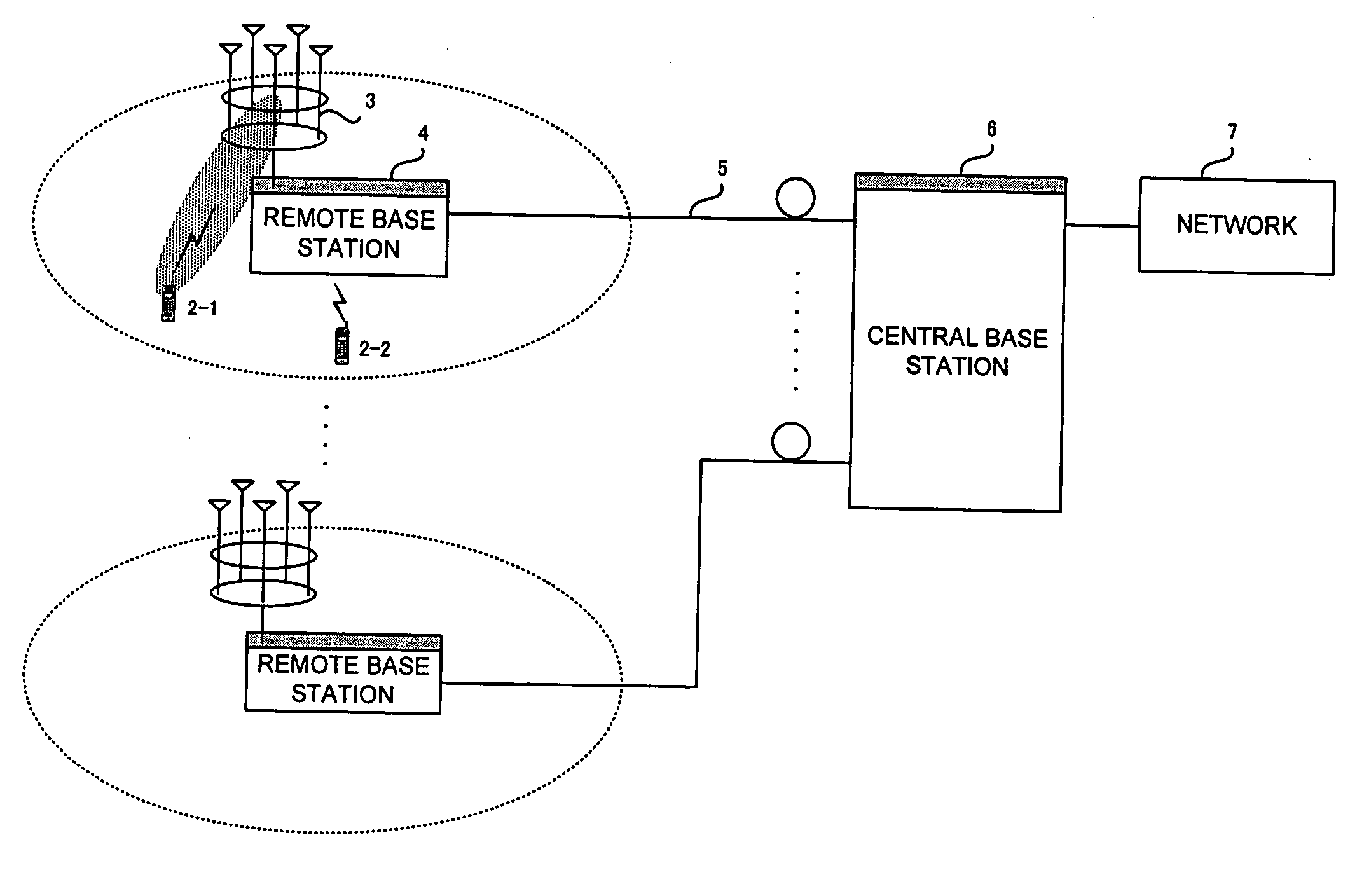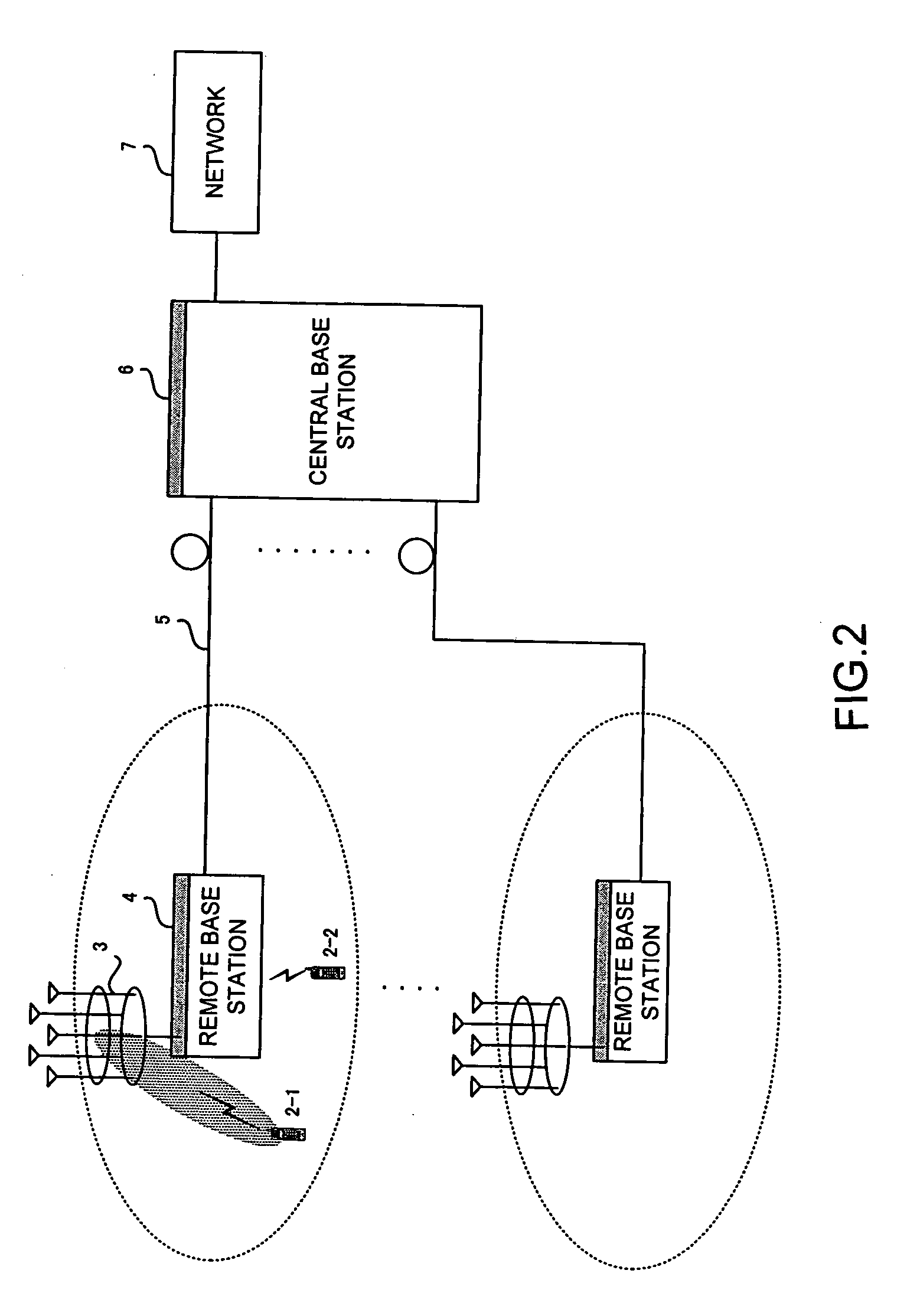Wireless communication system
a communication system and wireless technology, applied in the field of wireless communication systems, can solve the problems of difficult to consider the beam direction in other cells, difficult to perform real-time processing, etc., and achieve the effect of improving the efficiency of the downstream radio channel and suppressing radio interferen
- Summary
- Abstract
- Description
- Claims
- Application Information
AI Technical Summary
Benefits of technology
Problems solved by technology
Method used
Image
Examples
first embodiment
1. First Embodiment
[0042]FIG. 2 shows the configuration of a first embodiment of the present invention. As shown in the figure, a central base station 6 is connected to a network 7 and also to a plurality of remote base stations 4 through fiber-optic cables 5. The remote base station 4 perform wireless communication with a mobile station 2-1 selected from a plurality of mobile stations 2-1 to 2-2, by using a radio-wave beam formed by a direction-variable antenna 3.
[0043]FIG. 3 shows a layout of remote base stations 4 placed in cells. The central base station 6 controls a plurality of remote base stations 4-1 to 4-7 so that they send narrow-aperture radio-wave beams in the same frequency band of f1 in such directions that interference will not occur. The beam transmission directions can be switched at predetermined times so that communication can be performed with the mobile stations in all directions.
[0044]FIG. 4 shows a block diagram of the remote base station 4, which has the wi...
second embodiment
2. Second Embodiment
[0067] Another embodiment of the present invention will be described. The second embodiment differs from the first embodiment in that the central base station performs scheduling on the basis of information calculated by a mobile station. More specifically, the mobile station generates area information for the mobile station management table and also generates interference evaluation information. This enables a table to be created in accordance with the quality of radio waves received by the mobile station and thus enables the precision of scheduling for avoiding interference to be improved. The mobile station calculates the information by using a pilot signal sent by the remote base station periodically in each area.
[0068]FIG. 17 shows a block diagram of a mobile station of the second embodiment. The mobile station includes an antenna module 3, a duplexer (DUP) 8, a radio-frequency receiver (RX) 9, a demodulator (DEM) 17, a decoder (DEC) 18, an encoder (COD) 21...
PUM
 Login to View More
Login to View More Abstract
Description
Claims
Application Information
 Login to View More
Login to View More - R&D
- Intellectual Property
- Life Sciences
- Materials
- Tech Scout
- Unparalleled Data Quality
- Higher Quality Content
- 60% Fewer Hallucinations
Browse by: Latest US Patents, China's latest patents, Technical Efficacy Thesaurus, Application Domain, Technology Topic, Popular Technical Reports.
© 2025 PatSnap. All rights reserved.Legal|Privacy policy|Modern Slavery Act Transparency Statement|Sitemap|About US| Contact US: help@patsnap.com



